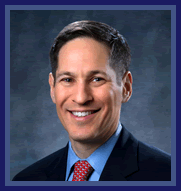Digital Press Kit
New CDC Vital Signs: HIV Among Youth
CDC’s latest Vital Signs Report shows more than half of young HIV-infected Americans are not aware of their status. Too many young people continue to become infected and few are tested for HIV.
- Overall, an estimated 12,200 new HIV infections occurred in 2010 among young people aged 13-24, with young gay and bisexual men and African-Americans hardest hit.
- Most youth living with HIV (60 percent) don’t know they are infected.
- Few young people are tested for HIV – only 13 percent of high school students, and 35 percent of people aged 18-24, have been tested
Youth, particularly those at high risk, should be taught early about HIV prevention with information they can understand and use, including education about risks and skills to help delay sex and prevent HIV. Sexually active youth can reduce their risk by choosing to stop having sex, limiting their number of sex partners, not having sex with an older person who may be more likely to already have HIV, and using a condom every time. In addition, HIV testing is the first step to getting medical care and treatment that can improve health, save lives, and prevent the spread of HIV.
Contact 1-800-CDC-INFO or text Knowit on your cell phone or go to HIVtest.cdc.gov for more information and testing locations.
“That so many young people become infected with HIV each year is a preventable tragedy. All young people can protect their health, avoid contracting and transmitting the virus, and learn their HIV status.”
-CDC Director Thomas R. Frieden, M.D., M.P.H.
“We can and must achieve a generation that is free from HIV and AIDS. It will take a concerted effort at all levels across our nation to empower all young people, especially young gay and bisexual youth, with the tools and resources they need to protect themselves from HIV infection.”
-Kevin Fenton, M.D., Director, National Center for HIV/AIDS, Viral Hepatitis, STD, and TB Prevention, CDC
- Morbidity and Mortality Weekly Report (2012) : "Vital Signs: HIV Infection, Testing, and Risk Behaviors Among Youths — United States | PDF [3.61MB]
- Vital Signs Press Release: More than half of young HIV-infected Americans are not aware of their status | PDF [1.47MB]
- Vital Signs: Home | Vital Signs Fact Sheet PDF [2.04MB] | November 2012 HIV Among Youth in the U.S. | Issues
- HIV-AIDS-Prevention Telebriefing November 27, 2012 | PDF [2.77MB]
CDC Resources
- Today’s Epidemic
- HIV – Basic Information
- Act Against AIDS
- Trends in HIV-Related Risk Behaviors Among High School Students — United States, 1991–2011
- CDC HIV Testing Recommendations
- CDC HIV/AIDS
- CDC Global HIV/AIDS
- Healthy Youth
- NCHHSTP Newsroom
- National Center for HIV/AIDS, Viral Hepatitis, STD, and TB Prevention
Additional Resources
- AIDS.gov
- Get tested for HIV. Text Knowit on a cell phone or find a testing site for more information and testing locations.
CDC works 24/7 saving lives and protecting people from health threats to have a more secure nation. Whether these threats are chronic or acute, manmade or natural, human error or deliberate attack, global or domestic, CDC is the U.S. health protection agency.
Podcast
Video
HIV/AIDS 101

Author: National Center for HIV, Viral Hepatitus, STD, and TB Prevention. Division of HIV/AIDS Prevention
Date: 7/11/2012
HIV/AIDS 101
View Press Releases in
Get email updates
To receive email updates about this site, enter your email address:
Contact Us:
- Centers for Disease Control and Prevention
1600 Clifton Rd
Atlanta, GA 30333 - 800-CDC-INFO
(800-232-4636)
TTY: (888) 232-6348 - Contact CDC-INFO







